#a study in heredity
Explore tagged Tumblr posts
Text
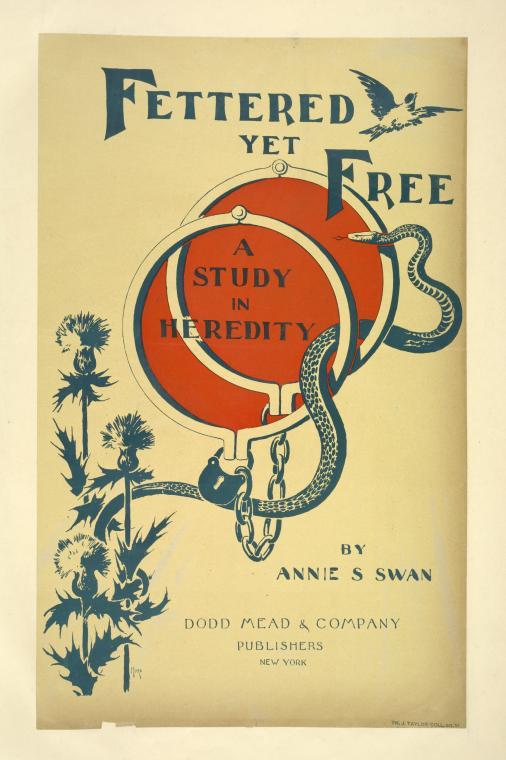
#thistle#antique#retro#vintage#spear thistle#Cirsium vulgare#bull thistle#common thistle#a study in heredity#fettered yet free#annie s swan#typography#design
5 notes
·
View notes
Text
Embracing the Heredity of Holiness in Recovery
The journey of spiritual rebirth begins with acknowledging the need for change. The Holy Spirit guides this transformation by providing inner conviction, renewing the mind, and empowering individuals to adopt a new spiritual inheritance.
Heredity of Holiness: Finding Redemption and New Identity Galatians 1:15-16 A New Heredity – Sacred Sobriety: A Path for the Soul Imagine if our spiritual inheritance could shape the struggles we face with addiction. We believe the "Heredity of Holiness" isn't just a poetic concept, but a foundation for our journey in faith recovery. Our heredity in this sense implies that holiness, like any…
#Apostle Paul&039;s Message#Bible#Bible study#Bible Verses Explained#Biblical Teachings#Christian beliefs#Christian Faith#Christian identity#Exploring Galatians#faith#Faith and Redemption#Finding Holiness#Galatians 1:15-16#God#Growing in Faith#Heredity of Holiness#Holiness and Redemption#Holy Spirit#Identity in Faith#Jesus#New Identity in Christ#Redemption#Spiritual Growth#Spiritual Journey#understanding scripture
0 notes
Text

Principles of Asexual Heredity in the Phyrexian Organism
We know these things for sure about Phyrexian reproductive biology:
Phyrexians reproduce asexually; it is well known that one drop of oil, from one individual, is enough to birth a population of offspring (such as all of New Phyrexia) or convert a non-Phyrexian organism.
Phyrexians natively born of the oil ("core-born") inherit mnemonic and phenotypic (appearance) information from the oil that created them. For example, core-born Phyrexians of the Orthodoxy naturally develop porcelain metal; it is an inherited, lineage-specific trait. The oil also carries ancestral knowledge such as the Phyrexian language and echoes of history.
The five suns of Mirrodin somehow caused the originally mono-black lineage of Phyrexian oil to splinter into five colored lineages. They may have all arisen from one drop of oil, but they are phenotypically diverse.
(Little canon data is given about the genealogies of core-born newts, but it would most logically follow that Phyrexians descend from single-parent lines, a family tree with continually forking branches and no unions of mating as with sexually reproducing organisms.)
The mechanism I propose for the diversification of Phyrexians on Mirrodin is mana-induced mutagenesis. As a deeply magical material, it follows that Phyrexian oil is prone to being influenced by concentrated sources of mana, such as the suns of Mirrodin (which were trapped in the core, in close proximity to the progenitor oil, during the birth of New Phyrexia). Exposure to mana can thus cause de novo mutation in glistening oil that manifests as novel phenotypic traits in resulting Phyrexians. These mutations are not random, guiding phenotypes to align with the color causing the mutation.
Then there is the issue of inheritance via phyresis, or compleating another organism which was not originally Phyrexian by introducing Phyrexian genetic material into its body. To keep it simple I will begin with mono-color infections: an organism is infected with oil from a Phyrexian whose lineage traits (i.e. white-aligned Orthodoxy lineage, porcelain) may not match their own color identity.
Hypothesis: Phenotype (what color/type of Phyrexian an infected individual becomes) is determined solely by the color of infection, not the subject's own colors. Crucially this isn't the same as color identity; i.e. one can be a porcelain Phyrexian and still have a Boros identity by gaining red-aligned values or retaining them from a pre-compleation life, even though their phenotype is white only. (Much like how elves are associated with green mana, but Simic-identity elves exist.) This phenotype color, in turn, is also what would be passed down to any newts the turned individual creates, or subjects they themselves infect.
MOM corroborates this hypothesis. A mono-black-aligned human, upon exposure to Progress Engine oil, becomes a Phyrexian with a pure blue-aligned phenotype. The changes to their color identity are additive--they retain black alignment--but their phenotype is blue only. All the transforming creatures of MOM follow this pattern.


However, Planeswalkers in ONE did not. For example, Jace was infected by Vraska, who had both black color identity and a black/Thanes-aligned phenotype, but spontaneously developed eyestalks and other traits characteristic of blue Phyrexians from the Progress Engine.


New hypothesis: Individuals with a strong enough internal concentration of mana, i.e. Planeswalkers, cause oil to mutate in vivo to align with their own color, much like how the suns mutated oil in Mirrodin's core. This further shows that mana-induced mutagenesis is color-specific. This should however create a new blue lineage, independent of the Progress Engine, also spawned of blue mana but not necessarily identical. I do not have an explanation for Jace's resemblance to the Progress Engine besides convergent "evolution."
Proposed further study (not ethics-approved): Infect a colorless Planeswalker, i.e. Ugin, with colored oil to test whether a null color identity still has mutagenic effects.
To complicate this, though, we also have examples of Phyrexians who are chimeras of multiple colors, combining traits of different lineages. Vishgraz was assembled with material (genetic and otherwise) from a white, a green, and a black Phyrexian. It makes sense that Phyrexians put together in this patchwork way could have a combination phenotype. Atraxa was not assembled from scratch, but infected with four separate colors at once. Maybe there are just four types of oil circulating in her body?


I am, of course, interested in inheritance. If these Phyrexians show combined phenotypes, what colored trait(s) do they actually pass down? Do they have individual "cells" that are still only white, only green, only black, etc., or did the colors somehow combine on the most basic hereditary unit level? Thankfully, we actually do have an example of a "chimera" Phyrexian asexually producing core-born offspring: Ixhel.

Ixhel shares multiple colors with Atraxa, not only in her color identity but also apparent phenotype (she has both Orthodoxy porcelain and Swarm copper). Two possibilities here: 1) She truly inherited both genetically; Atraxa passes down multiple colors when she reproduces. 2) Her "core" physiology is still rooted in one color, i.e. white porcelain, and the green parts were added after the fact. I don't have an answer for this, but it's intriguing to consider.
Proposed further study: Attempt to isolate the smallest "unit" of Phyrexian heredity (one single nanobot of the oil) and test if it can only store information about one color, or multiple. See if a germ is formed from only one of these units, as with eukaryotic zygotes, or from multiple.
My theories of Phyrexian reproductive biology remain highly speculative, but every new piece of data adds fuel to this fire, and I have plenty to elaborate on in later posts. If only the interplanar ethics committee would stop delaying my research.
#here from VERY POPULAR DEMAND#mtg#magic the gathering#phyrexian#new phyrexia#speculative biology#atraxa#ixhel#vishgraz#jace beleren#vraska#phyrexia all will be one#march of the machine#xenobiology
514 notes
·
View notes
Text
LOTR Newletter - Prologue
Thoughts as I read:
Delighted to learn from @astronicht that the Red Book of Westmarch is in fact a reference to the Red Book of Hergest, a Welsh medieval book that contains among other things the Mabinogion. I’ve been reading and rereading LOTR for over 20 years, and only now learning that there are piles of references that I’ve been missing. Thank you! your observations are always a delight!
I love the way Tolkien fully treats his Middle-earth writings as a reality. That’s been done by a lot of people, of course – in the 1600s and 1700s when novels were rarer it seems like it was viewed as almost required to provide some fictional ‘source’ for your story that you had merely edited. But Tolkien does it more convincingly than many, including writing of Hobbits as still existing and in the present tense (“they avoid us now with dismay and are becoming hard to find” and “Hobbits have never, in fact, studied magic of any kind”). He’s writing a mythology, not just a novel; and a key characteristic of a mythology is, I think, that the people who made it believed it. The words of one reviewer of The Hobbit express this quality wonderfully: “Has the air of inventing nothing. He has studied trolls and dragons at first hand and describes them with fidelity.”
I’m very amused that some of the hobbits’ characteristics are those of Tolkien, such as not liking complicated machinery and “being fond of simple jests at all times” (something he said of himself).
“[Hobbits’] elusiveness is due solely to a professional skill that heredity and practice, and a close friendship with the earth, have rendered inimitable by bigger and clumsier races.” ‘A close friendship with the earth’….what an evocative and intriguing way of putting it!
Tolkien seems to have a thing for dviding his fantasy races into three groups corresponding to hill/mountain-likers (Harfoots, Noldor), water-likers (Stoors, Teleri) and tree-likers (Fallohides, Sindar). The Harfoots are also said to associate more with Dwarves (as do Noldor), the Stoors with Men (and Tolkien’s main groups of Men are also more associated with water, due to Númenor), and the Fallohides with elves.
Hobbits are shorter than I remembered! I was thinking of 3-4 feet as normal, but Tolkien says “between two and four feet”, with the Bulkroarer (an exceptionally tall hobbit) at four foot five. Two feet tall is tiny! Harfoots (most hobbits, and probably including Sam) are on the shorter side; Fallohides (Tooks and Brandybucks are said to have more Fallohidish background, so that includes Frodo, Merry, and Pippin) are on the taller side.
I am amused that the one governmental service that Tolkien does consider essential is the post-office.
121 notes
·
View notes
Text
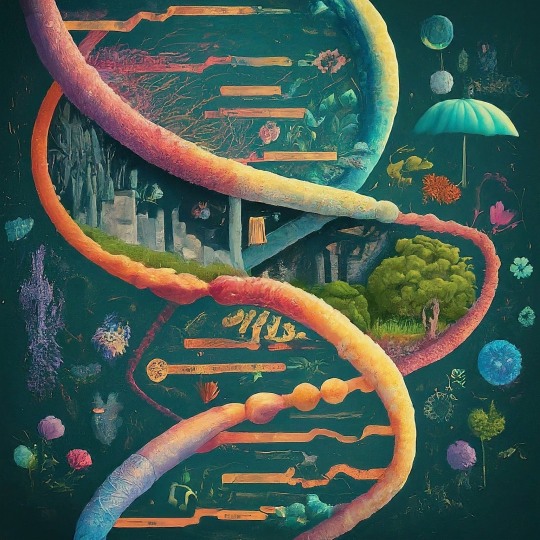
Epigenetics: A Journey Through Inheritance Beyond Genes
For centuries, scientists have been fascinated by the mysteries of heredity and how traits are passed down from generation to generation. DNA, the molecule that stores our genetic code, was once thought to be the sole determinant of our characteristics. However, a new frontier in biology, revealing a captivating layer of complexity beyond the DNA sequence itself: Epigenetics.
What is Epigenetics?
The term "epigenetics" was first coined in the 1940s by British biologist Conrad Waddington, but it wasn't until the late 20th century that its significance truly blossomed. Epigenetics, literally meaning "above genetics," refers to the study of heritable changes in gene expression that occur without alterations to the DNA sequence itself. Imagine DNA as the musical score, but epigenetics are the conductor and musicians who determine how the music is played. Through chemical modifications and adjustments to the proteins around DNA, epigenetics dictates which genes are turned on or off, influencing how cells function and ultimately shaping our health, development, and even behavior. Think of your DNA as the hardware: it contains the basic instructions for building and running your body. But epigenetics acts like the software, fine-tuning those instructions and determining which genes get turned on or off at specific times and in specific cells. These modifications, like chemical tags or changes in the packaging of DNA, don't alter the underlying code itself, but they can have a profound impact on how it's read and interpreted.
The Key Players:
DNA methylation: This process involves adding a methyl group to DNA, essentially silencing the gene it's attached to. Imagine it like putting a dimmer switch on a light bulb.
Histone modifications: Histones are proteins that package DNA, and changes in their structure can make genes more or less accessible to the cellular machinery needed for expression. Think of it like adjusting the curtains around a window - open wide for full light, slightly closed for filtered light.
Non-coding RNAs: These are molecules that don't code for proteins but can regulate gene expression in various ways. They're like the backstage crew in a play, ensuring everything runs smoothly.
The Power of Epigenetic Regulation
Epigenetic regulation plays a crucial role in various biological processes, including:
Development: During embryonic development, different cell types emerge from the same DNA blueprint by activating or silencing specific gene sets through epigenetic modifications.
Cellular differentiation: Specialized cells like muscle or nerve cells have unique functions due to differences in their active genes, controlled by epigenetic mechanisms.
Learning and memory: Epigenetic changes in brain cells are thought to be essential for learning and forming memories.
Aging: As we age, our epigenome accumulates changes that can contribute to age-related decline and disease.
Environmental influences: Diet, exercise, stress, and exposure to toxins can leave epigenetic marks on our genes, potentially impacting our health and even the health of future generations.
Epigenetics reminds us that we are not simply products of our genes. Our environment, choices, and experiences leave their mark, shaping who we are and potentially influencing our children's health. This deeper understanding of ourselves opens doors for self-awareness, empowerment, and potentially reshaping our narratives – not just as individuals, but as a species with the potential to leave a healthier legacy for generations to come.
#life science#biology#science sculpt#molecular biology#biotechnology#epigenetics#daily dose of science#dna#genetic inheritance#genetics#decoding dna#genetic code#science#double helix
119 notes
·
View notes
Text
The origins of modern genetics. From Mendel's principles of heredity, by W. Bateson.



(cont.) These F₂ plants were again allowed to fertilise themselves and the offspring of each plant was separately sown. It was then found that the offspring, F₃, of the recessives consisted entirely of recessives. Further generations bred from these recessives again produced recessives only, and therefore the recessives which appeared in F₂ are seen to be pure to the recessive character, namely, in the case we are considering, to dwarfness. But the tall F₂ dominants when tested by a study of their offspring (F₃), instead of being all alike (as the dwarfs or recessives were), proved to be of two kinds, viz. (a) Plants which gave a mixed F₃ consisting of both talls and dwarfs, the proportion showing again an average of three talls to one dwarf. (b) Plants which gave talls only and are thus pure to tallness. The ratio of the impure (a) plants to the pure (b) plants was as 2 to 1. The whole F₂ generation therefore, formed by self-fertilisation of the original hybrid consists of three kinds of plants: 25% pure dominants, 50% impure dominants, 25% pure recessives. Or three dominants : one recessive.
35 notes
·
View notes
Text
Asteroid Novalis (8052) and your preferred literature choices

Asteroid Novalis represents our favourite type of books to read (hence "novel") and potentially our preferred writing style if we choose to engage in such a task. The House placement is indicative of the reason(s) why you actively engage in reading.
In other news, it's good to be back (kinda)! School's been really busy so I have to of course put my focus mostly on that😅

NOVALIS IN ARIES You have a preference for fast-paced, energetic and action-packed books as you tend to get bored easily if otherwise. You'll also like books through which you can find elements you relate to.
NOVALIS IN TAURUS You have a preference for predictable books, ones through which offer practicality. Also, you'll like books with an artistic flare and descriptions (makeup, furniture, architecture, etc)
NOVALIS IN GEMINI
You have a preference for books that challenge what you think you may already know. With your flexible mental nature, you'll thrive reading educational books.
NOVALIS IN CANCER
You have a preference for books that remind you of a cozy home environment and your family. You seek literature that is nurturing and tugs at your heartstrings.
NOVALIS IN LEO
You have a preference for dramatic books, ones by which there is a great plot twist. You overall love books that are fun (I know this isn't a book but Disenchantment comes to mind bc there's literally no rules, just fun lol)
NOVALIS IN VIRGO
You have a preference for books that serve of use for your personal likes. You like books that are deeply detailed and analyze whichever topic is being studied. Devils advocate comes to mind.
NOVALIS IN LIBRA You have a preference for harmonious books, ones through which the characters are all treated equally. You would also like bits of romance.
NOVALIS IN SCORPIO You have a preference for dark books (true crime and mystery come to mind), ones that aren't afraid to hold back. You enjoy the intensity and passionate nature of such literature.
NOVALIS IN SAGITTARIUS
You have a preference for books that make you feel hopeful, ones through which you can metaphorically take a trip to a new destination. You enjoy fantasy-like books.
NOVALIS IN CAPRICORN You have a preference for books that offer structure in your life. Self help books come to mind, ones in which inform you on how to become more disciplined in your life.
NOVALIS IN AQUARIUS
You have a preference for books that challenge the status quo and are rebellious in nature. Dystopian-style books such as The Hunger Games and The Maze Runner come to mind as not only do they challenge societal norms, they offer to help people in the process.
NOVALIS IN PISCES You have a preference for books that act as an escape from reality, such as magical and fantasy genres. You too could enjoy literature pertaining to spirituality and your beliefs.
~Why you may enjoy reading~
NOVALIS 1H
As a means of self-improvement, personality growth and glow-up opportunity
NOVALIS 2H
As a means of growing your finances, learning financial literacy and how to manage your belongings
NOVALIS 3H
As a means of improving communicative ability and to be more efficient in self-expression
NOVALIS 4H
As a means of gaining awareness of ones heredity (particularly the mother), traditions and roots.
NOVALIS 5H
As a means of unlocking your creativity, a side hobby (just for fun)
NOVALIS 6H
As a means of necessity (for work/employment), to improve health overall (nutrition, physicality)
NOVALIS 7H
As a means of recreating romantic opportunities (or manifesting such)
NOVALIS 8H
As a means of exploring topics considered as taboo, to transform as a person, or just smut lol
NOVALIS 9H
As a means of growth, learning about other cultures (places and languages), philosophy, religion, upper education, indulging in social media
NOVALIS 10H
As a means of developing ones reputation, improving career, involving authority
NOVALIS 11H
As a means of achieving ones dreams, manifestation tactic (imagining your dream life through the litterature)
NOVALIS 12H
As a means of exploring ones fears, secrecy and privacy.

I have Novalis in Gemini 9H and I find that it resonates. I tend to read smaller articles online and, since I'm very curious by nature, I love literature that goes against what I thought I already knew
What's your Novalis placement? Does it resonate? Let me know in the comments🤍🤍
#astrology#themedialmercurial#astrovations#astro#astro community#astro notes#astro placements#astro observations#astroblr#astrological houses#asteroid astrology#asteroid
311 notes
·
View notes
Text
I'm the only one who thinks that, if Crocodile were the brothers' mom/dad, ASL would be super strict. I mean, do your homework, clean your room, eat your vegetables, your tutor told me that they don't study enough, but at the same time it would be serious, a very cuddly father, ¿do you want that doll that's worth 8 million? Dad would buy it for you, I'm sure that Sabo would put his hopes for him to inherit the casino, Ace would be very protective of his dad/mom, especially if a man with a red tattoo on his face got too close, Luffy would be his spoiled baby, they would only have He had to listen to her beautiful laugh, so that her world would be pink again. / Soy la única que piensa que, si Crocodile fuera el papá/mamá de los hermanos, el ASL sería s��per estricto. O sea, haz tu tarea, limpia tu cuarto, come tus verduras, tu tutor me dijo que no estudian lo suficiente, pero a la vez sería un padre muy mimoso, ¿quieres ese muñeco que vale 8 millones? Papá te lo compraría, estoy seguro de que Sabo pondría sus esperanzas en que él herede el casino, Ace sería muy protector con su papá/mamá, especialmente si un hombre con un tatuaje rojo en la cara se acercara demasiado, Luffy sería su bebé mimado, solo tendrían que escuchar su hermosa risa, para que su mundo volviera a ser rosa.
#crocomom#one piece#omegaverse#dragonxcrocodile#yaoi#asl brothers#dragodile#monkey d. luffy#sir crocodile
28 notes
·
View notes
Text
An Analysis of Haruka’s MVs: Distance and Disability
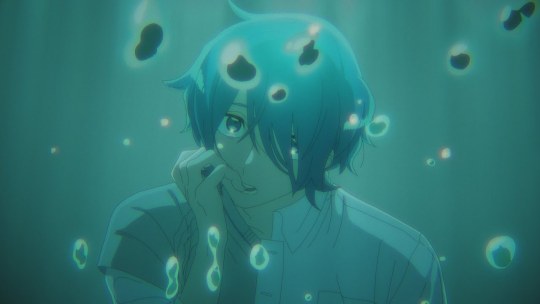
Hello! I’ve recently fallen down the rabbit hole that is Milgram and I have been itching to make some completely normal and sane analysis posts. My silly alternate title for this was gonna be “Things About Haruka’s MVs That Just Make Sense: A Hyperfixation-fuelled Analysis”, because honestly my autistic brain has been having a field day over here.
I am in awe with just about every single music video in this project; the animation is incredible and each one packs so much carefully laid out information. But I have been rotating Haruka’s in my head constantly since I first watched them, and I have a lot of Thoughts. Not about whether he’s guilty or innocent/forgiven or unforgiven. Not about whether or not I can justify his murders. Just some straight up imagery and symbolism analysis, through the lens of disability.
Haruka’s disability has not been specified, but I am confident we can at least say he is neurodivergent. I feel like the cultural differences in names for several things e.g. ‘learning disability’ vs ‘learning difficulty’ will just invite unnecessary drama, and is a little pedantic. What does matter here is that Haruka's experience as a disabled person is heavily intertwined within his story and his motives.
So, without further ado... let’s get into this!
Trigger warnings/TW: I will be discussing ableism, eugenics and harm towards disabled people. Everything else will be related to the music videos ‘Weakness’ and ‘All Knowing and All Agony’, so any triggering content within them may also be mentioned. Read at your own discretion and stay safe!
Disability: some brief (important) historical context
It is only within the last few decades that those who are disabled have been ‘seen’ for the first time. A modern society is (ideally) expected to be built to include and accommodate for disability, and to acknowledge disabled people’s existence. But for many countries (even the ones making steps outlined above) this is still not the case. For a very, very long time, globally, that has not been the case.
For most disabled people, society makes it very clear that they are a burden to it and are better off not existing.
I’m going to make this section as succinct as possible because...it’s heavy stuff. But it’s important, and I want you all to get the gist of what I’m saying. The weight of it.
Let’s highlight a piece of history regarding IQ and eugenics, surrounding the publication and subsequent worldwide reception of ‘The Kallikak Family: A Study in the Heredity of Feeble-mindedness’ by Henry Herbert Goddard in 1913:
“In 1927, it was used as evidence in the case of Buck v. Bell, which culminated in a Supreme Court ruling that the involuntary sterilization of ‘mentally defective’ persons was not unconstitutional in the United States. By 1938, thirty-three US states had passed laws allowing for the forced sterilization of women with learning disabilities and twenty-nine had made sterilization compulsory for people who were thought to have genetic conditions. Many European countries followed suit: Denmark in 1929, then Norway in 1934, and after that Sweden, Finland, Estonia, Iceland, Czechoslovakia, Yugoslavia, Latvia, Hungary and Turkey.”
— Limburg, J. (2021) Letters To My Weird Sisters: On Autism and Feminism, p. 126
This history of a ‘sterilization law’ includes Japan, who between 1948 and 1996 enacted the Eugenics Protection Law which “authorised the sterilization of people with intellectual disabilities, mental illnesses or hereditary disorders.” According to the government, about 25,000 were sterilized.
SO. It’s important to bring this up. To establish how much disabled people are not wanted, just from their governments. Let alone society. To this day, disabled people are hidden away from the public by families that are ashamed of their existence.
Japanese culture values collectivism, and maintaining the harmony of a group...to the extent of excluding those that don’t fit into the mould. That are different.
The question is: where do they go? The ones that are publicly rejected?
Haruka and The Curious Case of Distant Waters
Okay that’s enough of the heavy real-world stuff! Time to delve into some...*checks notes*...heavy fictional stuff. Fun!
Haruka’s MVs prominently display themes of distance and separation through the motif of water, specifically being submerged underwater.
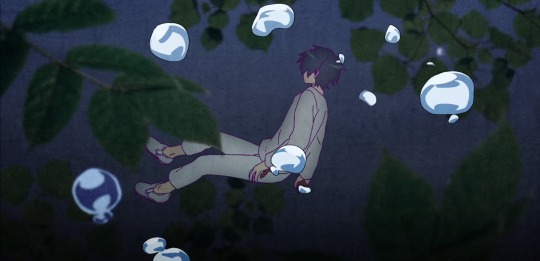
The name Haruka reinforces this concept as the specific kanji used (遥) translates to ‘distant’, ‘remote’ or ‘far away’. As there are many, many kanji choices for the name (including but not limited to: ocean/sea, eternity/permeance, clear/distinct/obvious, and spring/growth/cherry blossom) it feels like a particularly cruel and intentional choice to go with that one.
Through the exploration of this motif, we can see the extent in which Otherness/the state of being ‘Other’ drives Haruka to great lengths to close the distance and escape it.
What I noticed throughout both MVs (particularly AK&AA but note the beginning scene of Weakness), is that whenever Haruka looks at himself in a reflective surface (e.g. the vanity mirror, the fish tank), water either begins to rise and overwhelms him, or is already there and he appears submerged:
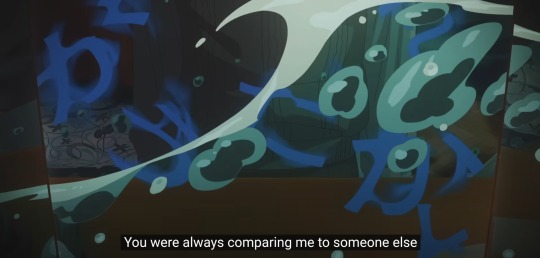
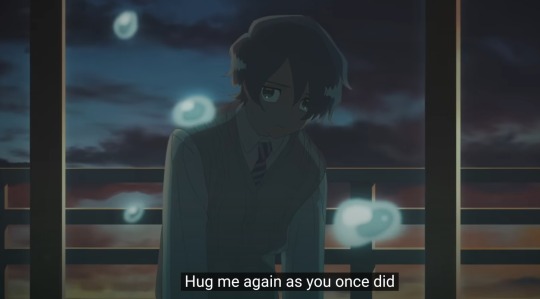
I think this is the “All-Knowing” part of AK&AA. He knows he’s different, and he knows there’s a huge ocean between him and his peers, his family, everyone. A disconnect when trying to listen and understand, but also when trying to be understood by others and listened to himself.
You know when you submerge your head in water, and your hearing gets all muffled and incomprehensible? And have you ever tried speaking underwater? You can’t, because if you open your mouth you’ll drown. It’ll just come out as bubbles rising to the surface.
I also think the bubbles symbolise rising tension, between what he wants and what he currently has. Bubbles are everywhere in these MVs, even in places where they shouldn’t logically be? Such as this scene, following the line “don’t wipe me out, don’t wipe me out”:

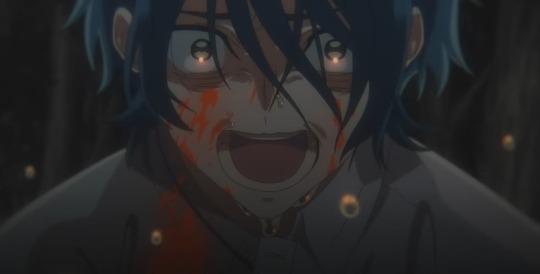
Immediately pans up to Haruka gasping for breath, droplets of water rising from...somewhere. For about a split second, and they’re gone.
This boy is really going through it. I’m getting an ‘emerging from the ocean before I drown’ vibe from this one folks. When the line that follows this scene is “I can’t stop, I can’t stop”, what I’m REALLY hearing is “I can’t stop (killing) or I’ll drown”. This is his lifeboat, pulling him out from the depths of being neglected and hidden away, into the spotlight.
Some interesting images from Weakness in relation to that (of spotlights):


Anyways, onto the next point:
Blue to Orange: Water to...Nectar?
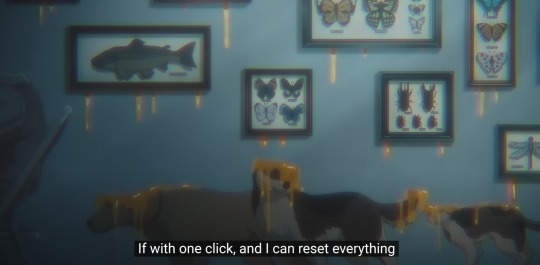
So, the orange liquid. It’s clearly representing blood, but I don’t think this is just a “danganronpa pink blood” situation of censoring/getting this video onto youtube without restrictions.
I think it’s most likely honey, specifically nectar.
The etymology of the word nectar shows its compounds translate to “death” and “overcoming”. Nectar is also called the drink of the gods, so it would make sense for it to be a ‘death-defeating’, immortalizing liquid.
For Haruka’s victims to contain nectar is very interesting. It reinforces that necessity to kill, to take the life of another, to sustain himself. To overcome the ‘living death’ he is experiencing by being hidden away from society.
This is his means of escape from drowning.
However, as we all know, things don’t turn out great for him. By the end of AK&AA Haruka is rejected once again by his mother, after which the door is shut (the light with it is gone too) and we’re met with this imagery:
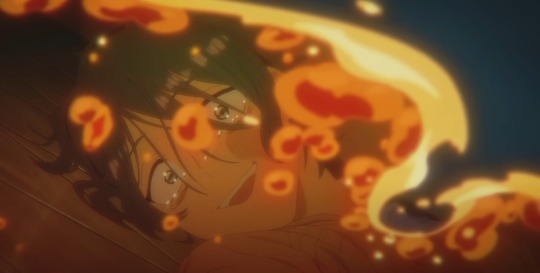

The nectar floods the room, engulfing him much like the water from earlier.
There are many things we could take from this. One being that the nectar-gathering/killing-spree has clouded his vision; it’s so sweet, so sickly sweet and he’s addicted to the taste of attention, even if it’s very bad attention.
Who else has honey imagery in their MV again?
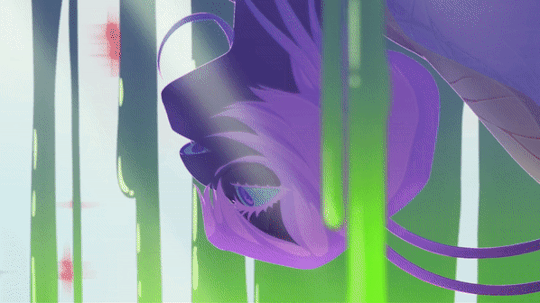
Oh, right.
Anyway, the nectar/honey situation could also be representing submerging into an even further level of distance. All that murder is gonna push people away, despite his motive being to close the gap between him and normal people. The 'ocean’ has lost clarity and become a maddening, delusional substance. After all, there is a type of honey literally called ‘mad honey’ known for its medicinal and hallucinogenic properties.
That’s enough about honey, though. Let’s move onto less unfortunate... oh, sorry, what was that? *checks notes*...Ah, yes. I meant to say, let’s move onto even more unfortunate symbolism:
The Necklace

So, this necklace. Haruka steals it from his mother’s belongings, and is his only material, physical connection to her. It is taken on the declaration of “making (her) love me again” and getting her attention once more, now he is no longer a child but a teenager closer to adulthood (at least, that’s what I consider the ‘shirt with a vest sweater and tie’ to represent. child him = the blue polo, teenager him = this one, adult him = an amalgamation of his teenager clothes).
I wasn’t sure if this was an opal or pearl/mother of pearl, but I’m leaning towards opal from the other depiction of it in Weakness:
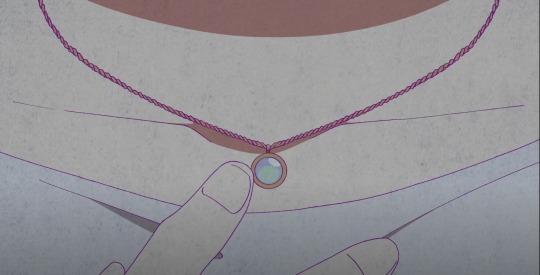
Opals are fun because they can symbolise both good luck and bad luck, usually to do with whether it’s your birthstone. There’s something to be said of Haruka’s belief in his ‘misfortune’ and the superstition surrounding these gemstones.
But they are even more interesting for the powers they supposedly have; in medieval times the opal was considered the ‘patron of thieves’ for their ability to grant the wearer invisibility.
There is a deliciously sad irony to Haruka’s theft with that titbit of information.
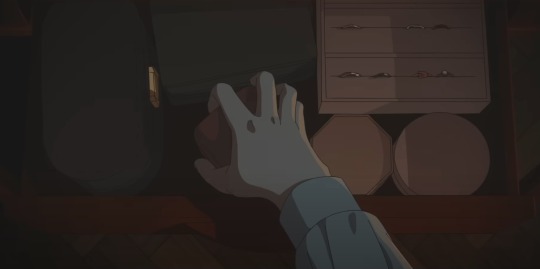
Now, if this isn’t an opal, and it’s a pearl/mother of pearl there’s still some fun interpretation to be had! A little less sad, even. Pearls invoke strong imagery of the sea, of purity, and of a connection to the maternal. If this is the last thing he has relating to his mother, I can see this necklace representing a lifeline when he’s deep in the ocean. A reminder of why he’s doing all of this killing, and who it’s for.
His mother’s attention (or the idea of having a mother at all, any mother) is his driving force in life.
Speaking of that...
So We Really Need To Talk About That Fish Tank: AKA, Why Haruka’s Mom Wins ‘The Worst Parent of The Year’ Award
This fucking fish tank.
Okay, I’m gonna start by saying: I don’t think this is reading too far into things. When it takes an animation team months, sometimes years to create a 3-5 minute music video, and one as detailed as this...you don’t just wing it. There are storyboards, there are key frames and there are choices made down to the smallest of details.

From the sheer volume of animal/insect/fish décor that resides in the Sakurai household, you bet I’m gonna pay attention to what type of fish are in that fish tank.

For one thing, they live in saltwater. This is a marine tank, aka the harder choice of aquarium to have. I mean, way, WAY harder. For the experienced only.
These fish right here? One is a clownfish, and the other is a yellow boxfish.
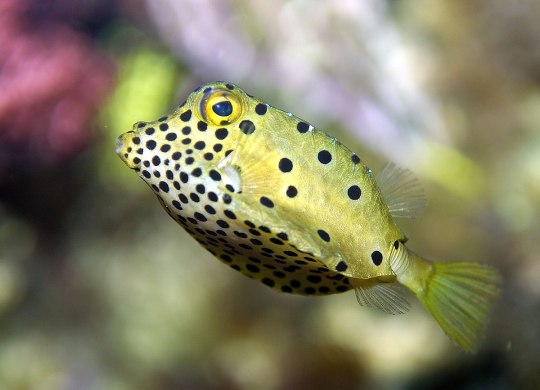
Boxfish are a nightmare to keep alive. This article goes into more detail than I will, but all you need to know is: if there was ever a fish out of all the fish you could possibly want in your tank, this is the one to avoid like the plague.
They release deadly toxins when stressed, as a survival instinct. Boom. All your fish are dead. They need to eat a shit ton of food, but are notoriously clumsy swimmers and slow eaters. Boom. Starving, stressed out boxfish. Boxfish either dies from starvation or dies from stress and toxins.
For Haruka’s mom to have not just one of these fuckers, but a tank consisting ONLY OF MULTIPLE BOXFISH AND CLOWNFISH...
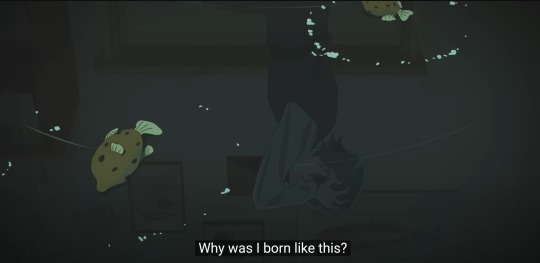
This is a high-maintenance tank. And it shows how much time and effort, how much care she puts into the things she loves.
How neglectful she is as a parent of a disabled child in contrast.
There’s something about the last scene between Haruka and his mother that reinforces this for me:
Haruka’s relationship with animals and himself: AKA, “why don’t I just become the damn fish tank?”
Let me backpedal a little bit. This subheading will make sense in a minute.
So, like I said earlier we have a lot of décor in this house relating to insects and fish. We also have a lot of pets. Both living and dead, taxidermized creatures in one household, proudly on display.
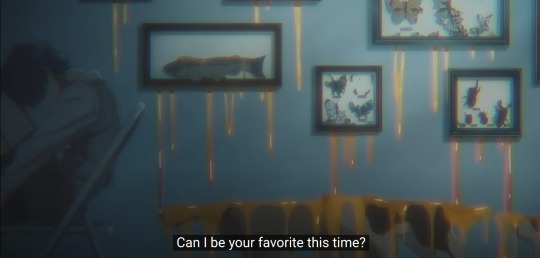
I think this may have created some confusion for Haruka regarding the value of animals being alive or dead, as in his perspective his mother values both equally. The fish in a tank may be full of alive creatures, but they’re still on display as if it’s artwork. Isn’t breaking the glass of a framed picture of a fish equal to breaking the glass of a tank with a ‘picture of living fish’?
(This isn’t to say Haruka is clueless to the impact of his actions, nor to justify any harm to animals. I just find the train of thought to be intriguing.)
So when considering these ‘objects’ are proud trophies of his work:
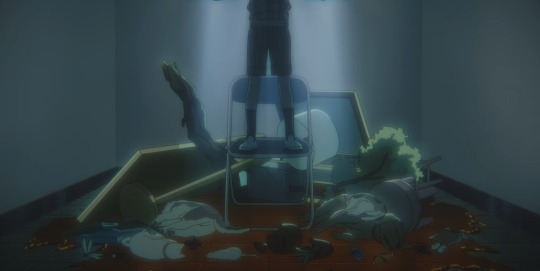
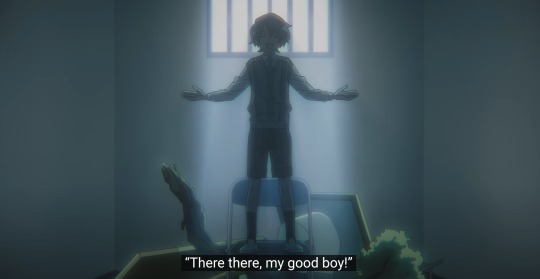
This is a carefully arranged display, which by the way, doesn’t contain a single fish. In fact the only piece of that moment visible here is the...large piece of driftwood? Okay. Keep that in mind.
We proceed into Haruka’s mother opening the door and seeing her son, for the first time in any of the MVs. Note the way they composed this shot:

I’m obsessed with this scene. The blue eye framing Haruka, with a literal fishbowl effect on him...
He is the goddamn fish in the aquarium now. His mother’s full attention is on him and him alone, with only the dead animals, the books, the lamp and the driftwood as window dressing to this wonderful display.
Doesn’t it just scream “Look at me! Look at what I did, mom!” to you?
That blue spotlight is on him once more. He is not just drifting deeper into an endless ocean, but contained in a vessel to be stared at.
One Last Observation
I didn’t know where to fit this in but I think the end feels appropriate.
His clothing here:
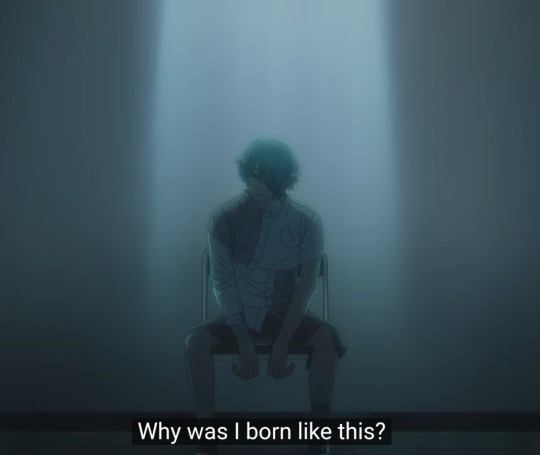
Is a frankenstein-esque mash up of clothes from his younger years. He wears this throughout AK&AA, and as I mentioned before it signifies him as an adult. However, I should clarify what I mean here as Haruka says “he thinks he’s 17″ and “doesn’t care about his age”. So... not an adult, but on the cusp of adulthood.
But I think he actually does care about his age, and quite a lot too.
This outfit feels symbolic of refusing to let go of the past, and of himself as a child. He’s literally grown out of his clothing, but he still clings onto it. He’s attached to the past because it not only contains his happiest moments, but the change from being loved to becoming neglected.
As a disabled person, you’re often treated with a lot more forgiveness when you’re younger. That is to say, some people don’t realise that children with disabilities grow up into adults with disabilities. There is a point where even support from medical and social services drops off like a cliff edge once you turn 18.
The ill-fitting clothing in this context becomes more than a reflection on Haruka’s feelings, and extends to reflecting society’s feelings on disabled adults ‘refusing to grow up’.
I don’t blame Haruka for holding onto his childhood like this. He’ll be even less publicly visible and seen once he is no longer a pitiful child, but a ‘weird’ adult in ill-fitting, children’s clothes.
#milgram#haruka sakurai#analysis#weakness#all-knowing and all-agony#symbolism#disability#*drops this onto the fandom like a ton of bricks* hi i'm new here pleasure to meet u#oh man I finally finished it... this is a very (and I mean a VERY) long post asdfghjkl#I'm pretty happy with how it turned out though! I got most of the things I wanted to say and point out down#believe it or not there was actually MORE I could've said but I think tumblr may have crashed on me if I did that lmao#particularly to do with Weakness as I focused more on AK&AA here. but anyways#I love how morally grey everyone is in this series! It makes for some really fun analysis!#it's so so nice seeing a disabled character in such a position too and not just 'is a cinnamon roll' or 'the devil reincarnate' yknow#I debated leaving in the real-world history stuff but I think it sets the tone of my analysis pretty well and shows the importance of--#--haruka's disability not as a justification of his actions but as a vital backdrop to his environment and struggles
256 notes
·
View notes
Text
Arktos and Arctus Complete Backstory
TL;DR at the bottom

A long time ago, Natquik used to work at an Arctic Laboratory, there they researched both medicine and GMOs or Genetically Modified Organisms. Back then their work was relatively tame, but they were very successful with what they did. However, as time went on, they became more confident and started to perform increasingly ethically questionable experiments, with their GMO experiments moving from modifying plants to modifying animals. Natquik, realizing that the facility he’s working for is turning into something he doesn’t want to work for, started to find a way out of his situation. His plans changed when they announced that the laboratory is planning to perform a cloning project, he decided that instead of just quitting his job, he needs to find a way to stop the facility altogether before it gets even worse. He found a way to quit his job and immediately became a whistleblower trying to expose the morally and ethically questionable acts of the laboratory. Scared for his life thinking that he might get tracked down, he left for the Antarctic. Unbeknownst to him, not only did the laboratory evade getting caught, but the cloning project continued, unaffected by his efforts to stop it.
The cloning project was conducted to see if it was possible for the scientist to completely clone an animal without the use of a womb, just a DNA sample and an incubator that they have just built exactly for this purpose. They planned to make a clone of the largest land predator available to them, the polar bear.
Around this time Bianca became pregnant with Orson and Ursa, and Barnacles, being the protective brother that he is, started to donate and save some blood to use for when Bianca goes into labor, and with their current technology, they have the resources to preserve blood bags for up to a year which would mean that they would still be viable in the event that Bianca would actually need them. Bianca found this unnecessary since there are more than enough blood bags in the hospital if she does need them when giving birth, but Barnacles insisted. Bianca, knowing that her brother means well let it be.
Unbeknownst to Barnacles, one of his blood bags was taken by the Arctic laboratory, finding him to be the perfect specimen to be cloned. Either out of heredity or pure luck the clones from Barnacles’ DNA resulted in twins being made. They were kept in an artificial womb or incubator to be studied and to see if there were any complications during their growth. To ensure that they twins lived, the scientists placed in a lot of extra precautions such as emergency power backups for the incubator to keep running and even attached the wind turbines and solar panel wiring directly to the incubator batteries to ensure their survival even in the event of a power outage as well as extra nutrients in the incubator to make sure that they don’t accidentally starve the twins.
Along with the cloning project, the facility was also working on weaponizing certain bacteria, planning to use them for their advantage, however they made a mistake along the way causing an aerial bacteria to spill and infect the scientists. Unable to work, those scientists slowly left the facility, those that were left were paranoid of either getting sick from the bacteria or get caught by authorities if the laboratory were to be investigated and eventually left as well. The scientists of the facility knew that what they were doing was unethical so none of them reported the facility, none of them also knew that they had all left and abandoned the facility, including the cloning project. They had all moved on with their lives, forgetting about the laboratory altogether. Since the facility was an offshore platform painted all in white, it essentially blended in like an iceberg, becoming well-hidden for years.
Thankfully for the twins, the precautions made by the scientists kept the incubator running making sure that the twins lived, however without anyone to watch over the incubator the twins were stuck being incubated for over a few years, well past the nine-month incubation period. Only after the incubator ran out of nutrients did it finally automatically open, letting them out and waking them up for the first time. They were completely alone in the facility, having to learn everything on their own, since they were already a few years old they were able to see and move around albeit on all fours. While looking around, they found the greenhouse that houses all the plants that were genetically modified, all of them were overgrown and growing fruits in large quantities and sizes, these were their source of food while they lived in the facility.
Waking up, playing with each other, eating in the greenhouse and learning by exploring the laboratory was the everyday schedule of the twins for another few years. Throughout this they learned how to walk from the pictures they saw in the facility, and learned how to talk when they figured out how to use the tablets and recording logs of the scientists.
From their incubation and years growing up in the facility, the following events happened during this time period:
- The events of Octonauts season 1-5 happened
- The events of Octonauts Above and Beyond season 1-4 happened
- The events of Barnius’ Prologue happened
One day the Octoark was passing by the Arctic waters, Barnius is on his way to pick up Bianca in the as she will become the new teacher on the Octoark to teach the Jr. Octoagents. On Barnius’ way, he saw the Arctic laboratory, almost mistaking it for another Iceberg, however after a closer inspection, he noticed the windows and two silhouettes moving about. Using the Octoalert he called Barnacles to show him his findings. After also finding it questionable, Barnacles contacted Tracker to check for any records that match the building, after finding that there’s no record for it, he finally asked Natquik whether he recognizes the place, which Natquik agrees to knowing it. After telling his story, Barnius added that although the place looks abandoned, there seems to be two small bear silhouettes roaming the place. Natquik added that there were no bear scientists back when he worked there. Barnacles thinks that it’s worth investigating with Natquik wanting to join him. Natquik was picked up by Dashi in the Octoray and was brought to the Octopod where Barnacles and him made their way to the old abandoned laboratory.
Entering the laboratory, they immediately came face to face with the twins curious to see the two adults. The twins greeted them with simple words like “Hi” and “Hello”, unable to make more complicated sentences. Barnacles and Natquik greeted them back and asked a few questions, however the twins couldn’t understand them beyond the words they knew, only repeating the question that they asked. After realizing the twins couldn’t understand them did they stop and changed their attention to observing the twins and the surrounding facility. Natquik, knowing the place, asked Barnacles to follow him. While Barnacles, having a sense of déjà vu after once again meeting polar bears that looks exactly like him listened while keeping his attention to the twins, he picked them up in his arms and offered them a fish biscuit and a kelp cake that he had brought with him. He immediately became fond of the twins as if he was hit with paternal instinct, similarly the twins found him interesting, finding comfort in his embrace.
Exploring the area both Natquik and Barnacles came to the conclusion that the facility has since been completely abandoned since the latest date of the research papers were dated only a few months after he left the laboratory, they also found out the reason why they left. However, the question of how the twins ended up here is still a mystery to them. This is when Natquik finally turned around and faced Barnacles who’s holding the twins. He finally realized how similar they looked, it wasn’t like Barnius with mostly similar features, it was more like the twins are a smaller version of him, as if they were his own children. His heart sank when remembered the cloning project. If the cloning project continued after he left, they would be the same age as the twins Barnacles are holding. Natquik started to run checking the last of the remaining rooms they’ve yet to check as Barnacles follow him carrying the twins, until they reached the last room where they saw the open incubator along with research papers on top of a table. Natquik immediately started to read them, trying to confirm his theory. Barnacles asked Natquik whether he had any leads on the twins’ parents and exactly as he says that, Natquik found the owner of the blood sample that was used to make the twin clones. Natquik can only utter out “They’re clones Barnacles, your clones”, while showing the document he found. Barnacles read the document and was shocked, the very children he was holding in his arms were his own children. He was overrun with both confusion and guilt, keeping him in silence as he had trouble taking in the information.
Just then the entire facility shook violently, almost knocking them to the floor, the laboratory was hit by a passing iceberg and had started to tilt. Natquik tried to talk to Barnacles but he’s still unable to talk, hugging the twins tightly while the twins are also grabbing tightly to their dad unable to understand the situation and are close to tears. Natquik told Barnacles that the facility is going down and that they had to leave, Barnacles can only nod as he ran with Natquik back to the Gup A they came here with. Natquik drove the Gup, knowing Barnacles needed time to understand the events as well as also trying to calm the twins down who were also unwilling to let go of their dad and are bawling their eyes out from fear and confusion.
As they left the laboratory slowly sank into the ocean. Since they have checked all the rooms of the laboratory, they were sure that only the twins were the only ones needed to be rescued, however, they were unable to recover the plants and the other documents, the only documents Natquik was able to take with him were the cloning project documents which weren’t enough to get justice served but it was useful enough since it has all the information they need for the twins.
Halfway to their journey back into the Octopod, Barnacles started to become more composed and was able to report back to HQ to ask Peso to be prepared to have two bears for checkup. After getting back to the Octopod and while the twins were getting their checkup by Peso, Natquik told the entire story to everyone including the cloning project. Barnacles also properly introduced the twins and told everyone that based on their findings in the lab and a confirmation from Peso’s DNA test that the twins are indeed his biological children and would be living with them from now on. Everyone was shocked at first but was immediately excited at the fact that they will be living with children in the Octopod from now on which would mean that the Octopod would be even livelier than before.
Barnacles named the twins Arktos and Arctus and became very attentive towards them, playing and teaching them everything and overall making up for lost time. Thankfully, since the twins were already familiar with some words, he was able to teach them how to talk quickly. Although he was still guilty that he had children he didn’t know about and was still trying his best to be the best dad for them, he was comforted by everyone and was told that it wasn’t his fault, what’s important now is that the twins now have a dad and a proper place they can call home. Which leads us to today, the twins are now living a normal life keeping their dad company whenever their dad’s crew are on a mission. Although they are personally aware of their origins as clones, they know they wouldn’t change a thing if it means they would meet their dad all over again.
TL;DR: Arktos and Arctus are Barnacles’ clones
When I made these two OCs for my AU I already had in mind that they are biologically Barnacles' children but since Octonauts season 1-5 and Above and Beyond season 1-4 is canon in this AU, I needed a good reason for why Barnacles has yet to meet his kids, and this backstory was my solution for that.
Edit: Yeah the points of perspectives in the artwork is terrible, I just realized hahaha. I think the incubator is too close.
19 notes
·
View notes
Note
Hi! @valsansretovr ! I have a question that I think I may have asked before but:
May I ask about Genealogy and it's Literary Significance? Especially in regards to its usage in Chivalric Romances? It's been something that's been in my head for awhile but I haven't really grasped it as a concept. Is it a device for metaphor? Is it simply just to attach a fantastic line of descent between two unrelated heroes?
Hi! What a great question! I always think of it as a way for people to objectify temporality and change, especially in the middle-ages when cultural dissemination (of a text, for example) relied on literal, material "reproduction," which introduces "error," or, more accurately,"variance" or "mouvance" (these are both key terms of an intellectual movement for the study of text called "new philology"). (The study of the variability of texts, and the invention of the codicological "stemma" coincide with growing public discourse surrounding "heredity" and "darwinism" in the 20th/19th century, and to this day medieval studies are still coming to terms with the implications of this.)
Literary genealogy (the genealogy of individual characters in a fictional context) and textual genealogy (the genealogy of textual variability) and biological genealogy (the study of the biological mechanisms of heredity) are sort of reflections of each other, with no clear "original." By this I mean: it is hard to determine what exactly provided the blueprint for the others. We have a tendency to link the biological with the "natural" and therefore with "truth," when in fact, that is never the case. Personally, it's why I like the metaphor of the mirror or reflection! Like these systems are just reflecting each other into infinity lol. These things aren't inherent to anything, it's just stories we tell about stories.
We also have to factor in how we culturally construct power and authority ( "authority" in the sense of the power of the "author") and how these systems and their very interrelation uphold it. even nowadays people still cling to the notion that if you just work your way back up the genealogical system you will gain access to the "original," which is pure and uncorrupted and therefore "true" or "superior" in some way: the "real" version of the story which is supremely authoritative, the ancestor who "justifies" your place in the world and the power you might wield within it, hence, I think the interest in grafting a new character onto a well-established fictional bloodline—it's a very metatextual act, acknowledging a pre-existing body of narrative data and introducing a new element. You may be thinking of the case of Galahad? Where someone at some point, decided to make two divergent traditions (two different "bloodlines") produce a child that would reconcile and "homogenise" Arthurian textual tradition?
tldr, because I don't know where this is going. Discourse about heredity is actually about power and how power is perpetrated and along which lines. It's about selection and exclusion. It's an interesting metaphor to use in literature because it grapples with questions of material reproduction and variability and how these things may be harnessed and intrumentalised. So yes, grafting a new character onto an existing genealogy is granting him immediate "authority" but the question remains that like. where does this power even come from in the first place? how does this work on us? why does this feel "natural"?
14 notes
·
View notes
Text
When Donald Trump talks about undocumented immigrants, he often brings up genetics.
Immigrants are “poisoning the blood of our country,” he said at a rally last year.
“Many of them murdered far more than one person, and they’re now happily living in the United States,” he said earlier this month. “You know, now a murderer, I believe this, it’s in their genes. And we got a lot of bad genes in our country right now.”
The former president’s language underscores a larger trend, experts tell STAT. The eugenics movement is once again taking center stage in the U.S. — both in the immigration policies and rhetoric promoted by Trump, and through a rise in race science in academic literature.
Eugenics — the pseudoscientific idea of fixing social problems through genetics and heredity via policies ranging from selective breeding to forced sterilization and genocide — was popular at the turn of the 20th century, before the devastation of the Holocaust quelled public support for it. The reasons for its resurgence include an increase in funding of race science from private donors, as well as proponents of scientific racism and white nationalists manipulating the push to make science more public.
Even well-intentioned scientists have fed into this shift by promoting genetic determinism — the idea that genes are the primary driver of traits and behaviors — and by platforming problematic work in the name of academic freedom.
“I wasn’t surprised that people are being demagogic about this stuff, but I am a little surprised that they’re so clearly not even hiding [it],” said Paul Lombardo, a professor of law at Georgia State University who has done extensive work on the legacy of eugenics. “This is not just saying the quiet part out loud. This is coming up with quotations in which, instead of using quotation marks, you’ve got swastikas at each end of the sentence.”
‘Bad genes’ and the birth of eugenics
Trump is frequently accused of racism, but the fact that he is embracing eugenic thinking has not drawn sufficient attention, according to Shannon O’Brien, a political scientist at the University of Texas, Austin, who has written a book on eugenics in American politics.
While racists harbor hatred for others because of their ethnicity or the color of their skin, eugenicists take it a step further and “like to legislate people out of existence,” O’Brien said. “They are OK with sterilization. They’re okay with extermination, and they believe that certain groups are superior and it’s OK to enact things that make it difficult for other ones to exist. I find that far scarier than racism.”
Asked about Trump’s rhetoric and the eugenics movement and his remarks about “bad genes,” Karoline Leavitt, the campaign’s press secretary, told STAT, “President Trump was clearly referring to murderers, not migrants.’’
The former president also has a history of statements suggesting that certain people are genetically superior. A 2016 documentary pointed out Trump’s father, Fred, introduced him to “racehorse theory” as a child — the idea that “that if you put together the genes of a superior woman and a superior man, you get superior offspring.” He’s used this idea to promote his own intelligence as well. “I had an uncle who went to MIT who is a top professor, Dr. John Trump. A genius. It’s in my blood. I’m smart,” he told CNN in 2020.
This way of talking about genetics is rooted in a long history that begins with the English anthropologist Francis Galton, who took his cousin Charles Darwin’s theory of evolution and applied it to humans, first using the term eugenics in 1883. The nascent field of eugenics matured into a full-fledged field of study in the United States. Much later, in the 1990s, the sequencing of the human genome inadvertently created a new surge in eugenics — emboldened by the idea that scientists could isolate genes responsible for complex behaviors, like poverty, crime and intelligence.
How companies like 23andMe bolstered genetic determinism
Those affiliated with the Human Genome Project hoped sequencing the genome would end notions that genetics created significant differences in different groups — “that it would lead us to this post-racial world,” said Aaron Panofsky, the director of the Institute for Society and Genetics at the University of California, Los Angeles.
“But it turns out that both scientists and the public spend all their interest in the 0.1% of genetic variation that makes us different, not the 99.9% that makes us the same.”
In promoting their research to the public and getting research funding from the government, geneticists often hyped up the role genes play in people’s lives. The Human Genome Project “was a huge public undertaking,” said Emily Merchant, a historian of science at the University of California, Davis. “It was almost $3 billion and took more than a decade to complete. So it needed a lot of popular support. The scientists who were trying to generate that popular support did it by promoting genetic determinism.”
This sentiment persisted in ensuing years because of popular genetic testing companies like 23andMe and Ancestry.com, which marketed its products with the premise that an understanding of genetics held the secret to good health and could quantify people’s sense of belonging to racial or ethnic groups.
In the early 2010s, there was another shift in how mainstream academic circles discussed ideas that intelligence was genetic or that race had a biological basis. Richard Lynn, a psychologist who claimed that people from certain countries had lower IQs, promoted a biased dataset on IQ differences between countries that became increasingly widespread in academia. Another theory, called “differential K theory,” began to circulate around this time, stating that Black people have lower IQs and are more aggressive.
“The national IQ database, differential K theory, they should have died the death bad science deserves to die. They have no scientific merit,” said Rebecca Sear, an evolutionary behavioral scientist at Brunel University who has documented the resurgence in eugenics in demography. “They’ve both been extensively critiqued. They are both currently thriving in the academic literature.”
While controversial among the scientific community, ideas like Lynn’s continued to spread in academia, in part because of the ethos of academic freedom — the idea that scholars should be able to research and debate any issues in their field, and that rejecting a paper based on problematic findings is tantamount to censorship.
“That’s a very, very problematic argument, but I think it is quite widespread,” Sear said. “Academic freedom isn’t the freedom to say literally anything in an academic forum. It’s the freedom to say anything with a sound methodological basis.”
While these ideas lacked scientific rigor, Sear explained, they were often not intended for other scientists. “Scientific racism really is not aimed at academia. It’s aimed at the outside world. And this, I think, is why it’s so often such bad science,” Sear said.
The appropriation of open science
The open science movement around this time also proved to boost the spread of flawed research on race, ethnicity, and genetics. Academic journals increasingly were publishing papers without paywalls, so anyone could access them, and often requiring the data underpinning research to be available.
Some scientists had also begun posting early drafts of their work, called “preprints,” on public forums. By doing science in the public square this way, people with explicit political agendas could access, manipulate, and reinterpret published research in a way that sometimes took academics by surprise.
Online, white nationalists used popular genetic testing websites to prove how white they were, and reanalyzed scientific data with a bent to affirming biological differences between races. They also seized on uncertainty among biologists about how to discuss race in the academic literature. Discussion forums on the subject might lean on anti-science conspiracy theories, but users could sometimes make sophisticated arguments about statistical uncertainties or the distinction between correlation and causation.
“They read both against and with the scientific literature, and that’s the way in which it becomes a very complicated dance that they sometimes make,” said Panofsky, who has studied the ways that far-right movements weaponize genetics.
The solution to the weaponization of genetics isn’t gatekeeping research, experts studying the issue agree. But, they say that academia hasn’t confronted the ways science can be used to embolden bigotry.
“We have basically a metric for how much Nazis like your research,” said Jedidiah Carlson, a population geneticist at Macalester College who led an analysis of how preprints circulate among right-wing extremists online. But it’s not a feature many are interested in. He wants to see researchers more attuned to the long-term impact of their work.
Incentive structures in research are also responsible for the continued popularity of research on topics like the links between genetics and intelligence or educational attainment, Carlson said. It’s “easy to get money for it, because you can say this has immediate policy implications for education and immigration policy … It’s just treated as this generic ‘apolitical’ research when it never has been.”
Challenging the idea that genes are ‘in the driver’s seat’
The failure to deeply engage with the dark history of eugenics and the way it’s informed a number of academic fields is linked to current political hostility directed toward immigrants, according to Marielena Hincapié, an immigration scholar and lawyer at Cornell University who hosted a symposium on the 100-year legacy of eugenics and the Immigration Act of 1924.
She points to recent attacks on immigrant communities carried out by people that believe in the Great Replacement Theory, a conspiracy that posits there is a concerted effort to diminish the power and influence of white people in the United States. The gunman behind one such attack, in Buffalo, New York, directly cited genetics research in his thinking.
The incident sparked some soul searching within the genetics community, which has also pushed back on problematic use of its research. In one case, a genetics consortium challenged the use of its data by a private company to screen embryos. On another occasion, a now-defunct app claimed it could test users on whether they had genes associated with same-sex sexual orientation, drawing on a paper published in Science. That prompted a protest petition signed by more than 1,600 scientists.
There’s also growing interest in the scientific community in how social determinants, such as economic policies, racism, and climate change, shape people’s health, and in the field of epigenetics, which studies how the environment affects gene expression. These paradigms open up an understanding that “genes are not necessarily in the driver’s seat, but they’re in an interactive relationship with a whole bunch of other factors,” said Panofsky. “They seem to open a door to a post-deterministic biology and genetics.”
Even so, the field has yet to truly rethink its buy-in of the idea that genes play a central role in people’s abilities and behaviors, Panofsky said. That thinking can inadvertently support the kind of problematic rhetoric Trump has applied to immigrants. While much of the U.S. has moved on and forgotten about its eugenic past, the country hasn’t done the work to refute the ideas it made so popular.
“We presume that we’ve done the work of rooting these matters out of our society,” said Michele Goodwin, a professor of constitutional law and global health at Georgetown Law. “But that presumption is proving to be quite thin and weak in these times.”
Just over 100 years ago, eugenicist Harry Laughlin testified before the U.S. House of Representatives that “The character of our civilization will be modified by the ‘blood’ or the natural hereditary qualities which the sexually fertile immigrant brings to our shores.” His argument wouldn’t be out of place today.
#Trump’s talk of ‘bad genes’ is rooted in eugenics. Experts explain why it’s making a comeback#‘Instead of using quotation marks#you’ve got swastikas at each end of the sentence’#nazi#eugenics
7 notes
·
View notes
Text
Science Science-Fiction Movies
Not all scientists are physicists! Here are some movies that highlight different fields of study
All fully recommended, some of my personal favorites
Geomorphology and Geophysics: The Core
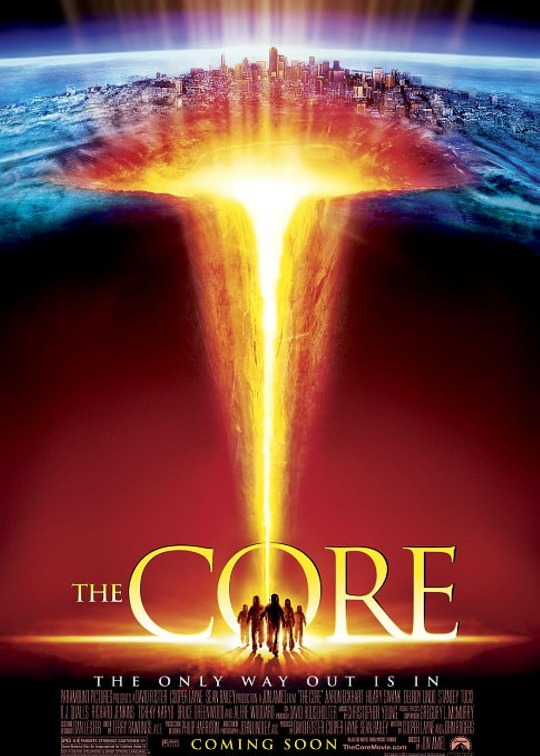
Geomorphology: the scientific study of the physical and chemical processes that impact how surface of a planet changes. For example, a fluvial geomorphologist is a scientist that studies how rivers (fluvial) change the surface of a planet. Not always Earth, some geomorphologist study planets like Mars and Mercury. Earth science is more than just geology and rocks! Sometimes it also about rocks moving around or being eroded 🌏
Meteorology: Twister and Twisters


Meteorology: the study of a planet’s atmosphere with a strong focus on forecasting the weather 🌪️
Linguistics: The Arrival
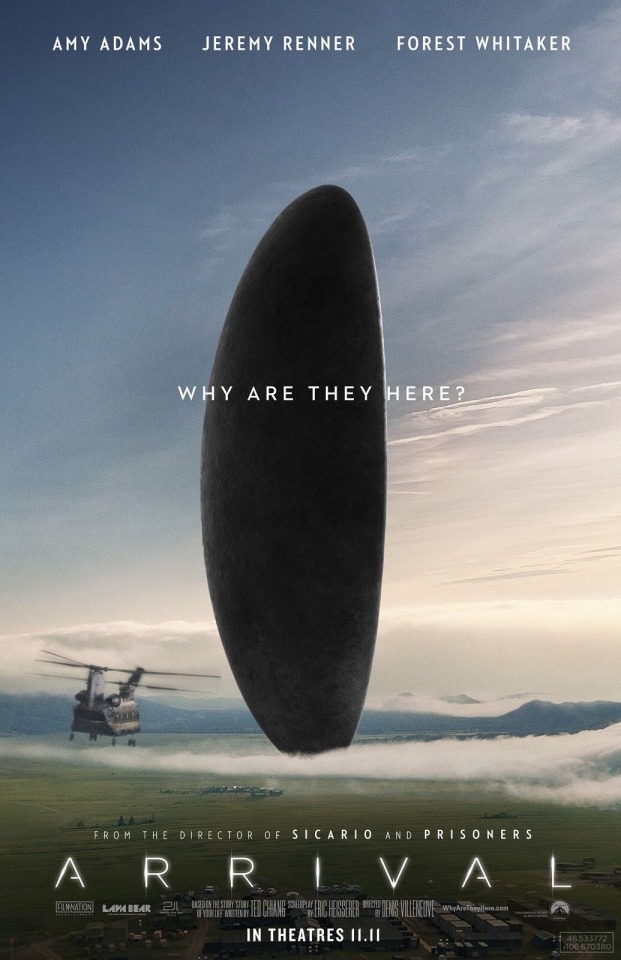
Linguistics: the scientific study of languages 🖋️
Seismology: Tremors
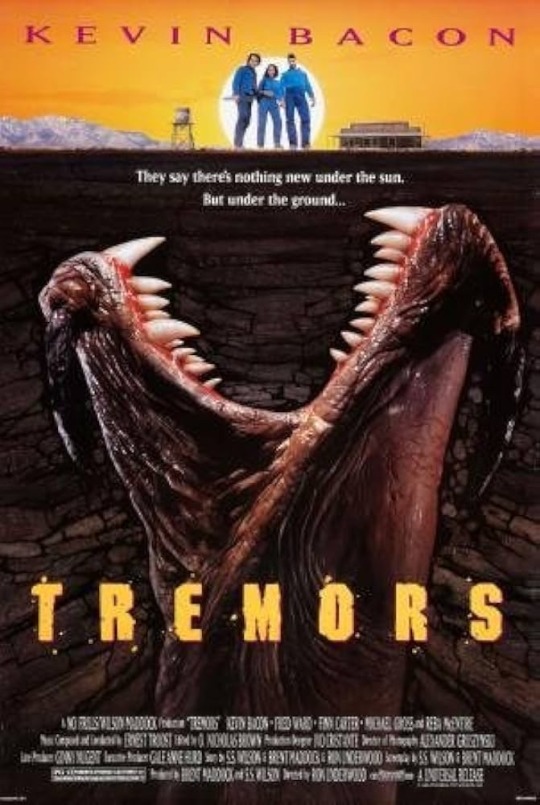
Seismology: the scientific study of earthquakes 🪇🪨
Heliophysics and Solar Physics: Sunshine
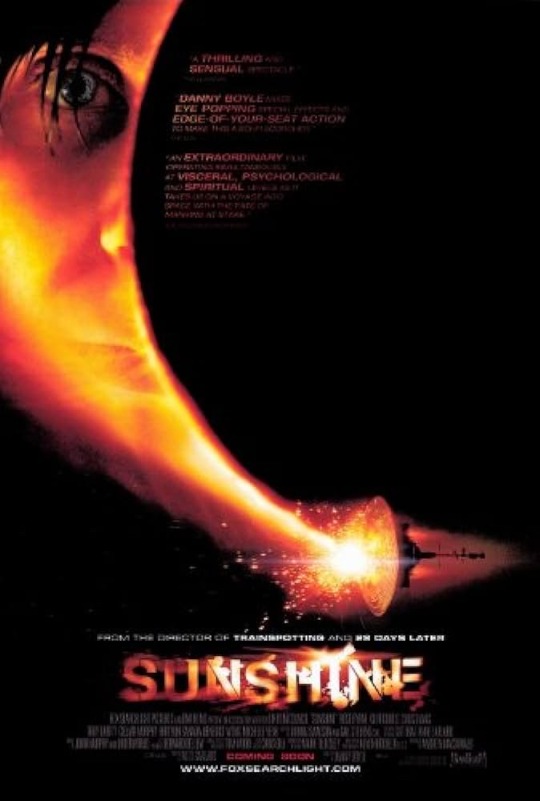
Heliophysics: the scientific study of the sun and its effects on the solar system ☀️
Paleontology: Jurassic Park
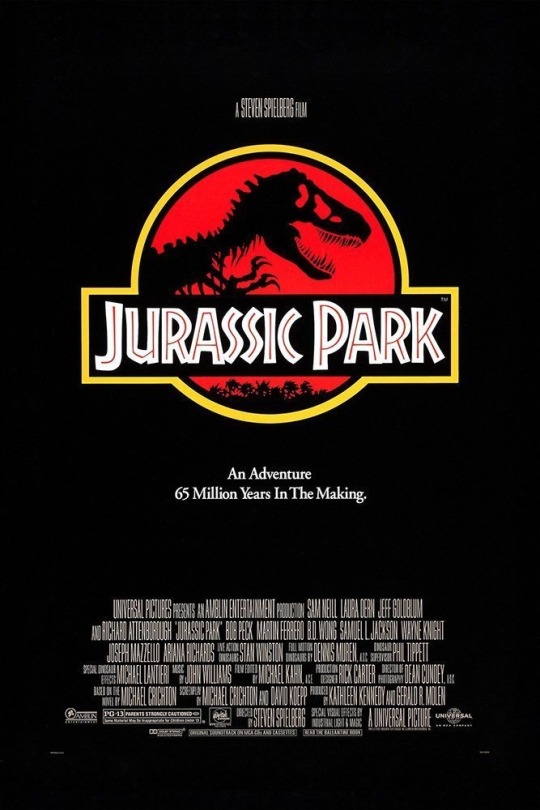
Paleontology: the scientific study of life on earth through the fossil record 🦴 🦕
Botany and Astrophysics: The Martian
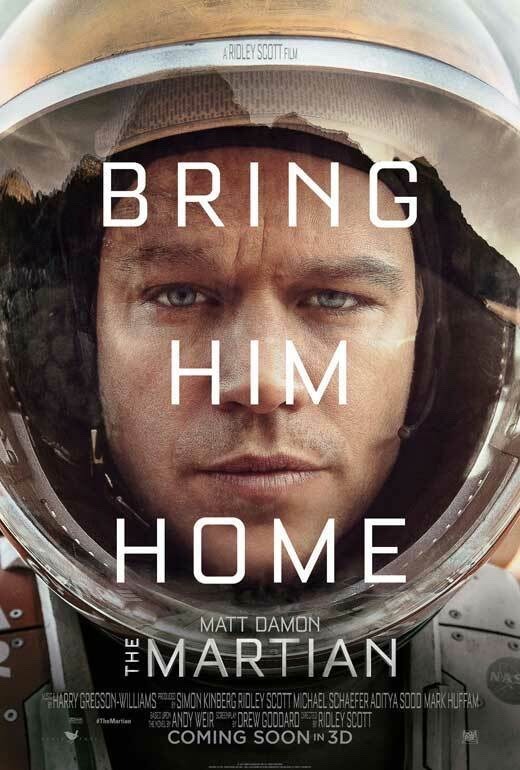
This one is a bit of a mix. The book makes uses of a lot of astrophysics, but the character is a botanist
Astrophysics: the scientific study of physical and chemical processes of the cosmos (a newer field of astronomy that includes more of a focus on physics) 🛰️
Botany: the scientific study of plants 🌱
Genetics and Astronomy: Gattaca
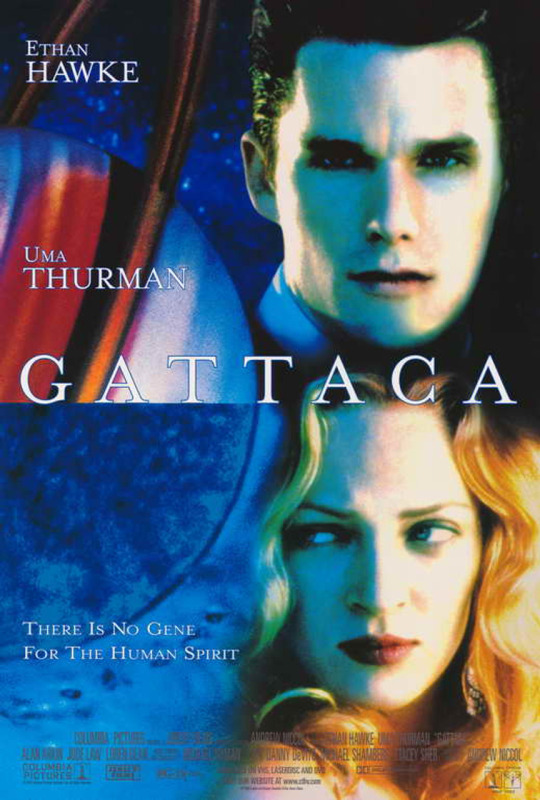
Another mix! The main theme of the movie revolves around genetics and genetic engineering (specifically eugenics). However, the main character is an astronomer/astronaut
Genetics: a branch of biology that concerns the scientific study of genes, genetic variation, and heredity 🧬
Astronomy: the study of space, stars, planets, and other celestial objects 🪐
#the core#twister#twisters#arrival#tremors#sunshine#movie recommendation#science fiction#science fiction movies#geomorphology#geophysics#meteorology#linguistics#Seismology#heliophysics#botany#the martian#jurassic park#paleontology#gattaca#genetics#astronomy
17 notes
·
View notes
Text
THE TREE OF NATURAL SCIENCE

LIFE SCIENCE -> Any science concerned with the study of living organisms
THE BRANCHES OF LIFE SCIENCE:
BIOLOGY
This branch of life science will study living organisms, and it will be divided into many specialized branches that cover their morphology, physiology, anatomy, behavior, origin, and distribution.
THE BRANCHES OF BIOLOGY:
CONSERVATION
This branch of biology will study environmental conservation and biodiversity on Earth.
■Wildlife Management is a branch of conservation that will specialize in the concern for the management process influencing the interaction between wildlife, its habitat, and people in order to achieve the pre-defined impact.
ECOLOGY
This branch of biology will study how organisms interact with the environment around them.
■Autecology is a branch of ecology that will specialize in studying a specific organism of a species.
■Synecology is a branch of ecology that will specialize in studying an ecosystem.
EVOLUTION
This branch of biology will study any evolutionary process with its regard to diversification and adaptation over many years.
GENETICS
This branch of biology will study genes, genetic variation, and heredity.
MARINE BIOLOGY
This branch of biology will study marine organisms.
■Ichthyology is a branch of marine biology that will specialize in studying fish.
MEDICINE
This branch of biology will study managing the diagnosis, prognosis, prevention, treatment, palliation of an injury or disease, and promoting the health of a patient through such mentioned practice.
■Psychiatry is a branch of medicine that will devote itself to the diagnosis, prevention, and treatment of deleterious mental conditions.
□Addiction psychiatry is a branch of psychiatry that will focus on the evaluation, diagnosis, and treatment of people who have one or more disorders related to addiction.
□Forsenic psychiatry is a branch of psychiatry that will be applied in a legal context involving any civil, criminal, correctional, regulatory, or legislative issues.
□Neuropsychiatry is a branch of psychiatry that will examine both organic and psychological aspects as a cause for illness.
□Occupational psychiatry is a branch of psychiatry that will use the extension of psychiatric knowledge and skill to the day-to-day functioning of individuals in the workplace and their organizations, with the goal of helping both function better.
□Geriatric psychiatry is a branch of psychiatry that will center itself on prevention, evaluation, diagnosis, and treatment of mental and emotional disorders in the elderly.
□Child psychiatry is a branch of psychiatry that will be concerned with the study and treatment of mental, emotional, and behavioral disorders of childhood.
□Adolescent psychiatry is a branch of psychiatry that will be interested in the diagnosis and the treatment of disorders of thinking, feeling, and/or behavior affecting children, adolescents, and their families.
MOLECULAR BIOLOGY
This branch of biology will study the chemical structure and any biological process of a molecule.
PHYSIOLOGY
This branch of biology will study how the human body functions.
BOTANY
This branch of biology will study plants.
■Mycology is a branch of botany that will focus on the study of fungi, including their taxonomy, genetics, physiology, and any ecological role.
ZOOLOGY
This branch of biology will study the entire animal kingdom.
■Anthrozoology is a branch of zoology that will study the interaction between any human and another animal.
■Arachnology is a branch of zoology that will handle the study of spiders and any related species known as arachnids.
■Cetology is a branch of zoology that will be interested in the study of marine mammals.
■Entomology is a branch of zoology that will focus on the study of insects.
1. COLEOPTEROLOGY is the sub-branch of entomology that will concern itself with the study of the beetle.
2. DIPTEROLOGY is the sub-branch of entomology that will study all types of flies.
3. ISOPTEROLOGY is the sub-branch of entomology concerned with the study of the termite.
MICROBIOLOGY
This branch of biology will study any microorganism.
CHEMISTRY ->
The study of the identification of the substances that which matter is comprised; the investigation of their properties and the methods in which they interact, combine, and change; and the use of these processes to form new substances.
THE BRANCHES OF CHEMISTRY:
ORGANIC CHEMISTRY
The branch of chemistry that's concerned with the study of an organic substance and compound.
INORGANIC CHEMISTRY
The branch of chemistry that will examine the properties and behavior of inorganic compounds, which would include any metal, mineral, and organometallic compound.
PHYSICAL CHEMISTRY
The branch of chemistry concentrated on the application of technique and theory of physics to the study of the chemical system.
ANALYTICAL CHEMISTRY
The branch of chemistry interested in obtaining, processing, and communicating information about the composition and structure of matter.
STEREOCHEMISTRY
The branch of chemistry illustrating the three-dimensional arrangement of atoms and molecules and its effect on the chemical reaction.
BIOCHEMISTRY
The branch of chemistry that will evaluate the chemical and physicochemical processes and substances that occur within the living organism.
GEOCHEMISTRY
The branch of chemistry that will study the chemical composition of the earth and its rocks and minerals.
FORENSIC CHEMISTRY
The branch of chemistry that will use the application of chemistry to help law enforcement catch their criminal.
PHYSICS ->
The study of the structure of matter and how the fundamental constituents of the universe interact.
THE BRANCHES OF PHYSICS:
OPTICS
The branch of physics that will study the sense of sight and the behavior of light, or the properties of transmission and deflection of other forms of radiation.
ELECTROMAGNETISM
The branch of physics that will investigate the interaction of electric currents or fields and magnetic fields.
RELATIVITY
The branch of physics that will examine special relativity and general relativity. For example, special relativity will apply to all physical phenomena in the absence of gravity, but general relativity will explain the law of gravitation and its relation to any force of nature.
THERMODYNAMICS
The branch of physics that will illustrate the energy and work of a system.
ACOUSTICS
The branch of physics that will vocalize the study of sound for us to hear it.
QUANTUM PHYSICS
The branch of physics that will focus on the study of matter and energy at the most fundamental level.
MECHANICS
The branch of physics that will examine the relationship between force, matter, and motion among a physical object. To define this, this force, when applied to an object, will result in the displacement or change of an object's position relative to its environment.
EARTH SCIENCE ->
See previous post regarding this topic.
37 notes
·
View notes
Text
Okay so:
I'm studying for my final test in biology, and it's all about heredity. Yada yada punnett squares yada yada. You know the drill.
So one of the points is about complete dominance, incomplete dominance, and codominance, so because It's on my mind with the new season:
Does Todoroki Shouto have codominance or incomplete dominance with his quirk?
Incomplete dominance is essentially the two alleles (them your genes) mixing together to make a new one. E.g. red flower + white flower = pink flower.
While codominance is neither dominant nor recessive, such as AB blood type being neither A nor B while being both A and B. (Like his genetically improbable dad. No, seriously, it's weird order for Shouto to be O, Endeavor would have to be AO, BO, or O. Or he would have to be Cis AB where the two alleles are treated as one. It's a rare trait worldwide but is apparently common over in East Asia? It's literally a mutation caused by an enzyme making their blood type ABO. Yes, that is hilarious if you know what that abbreviation means in fanfics, and I will most certainly have a character make a joke about that when I can.)
IM GETTING DISTRACTED
But this would mean that Shouto's quirk is the codominace between both of his quirk alleles, right? I mean, his hair is codominance, and his eyes are two. And curse the blood type zodiac thing going on across the pond because having Shouta being completely codominant straight down to his blood type would be cool.
I mean, everything about him is very obviously codominant, and I bet if his parents' skin tones were more different (and it wouldn't be harder to draw and animate) his skin color would be perfectly split down the center (hello giving Izuku an advanced eyesight quirk that let's him see our stripes and would probably make him one if the few people would could see Shouto's literal half-n-half skin)
But can you imagine if it was incomplete dominance? The ice and fire mixing into something new? Would it be a cold fire? Hot ice? Would it be like Touya (and my headcannon of Fuyumi) where he would have the resistance to one quirk while the power of the other one? What if they spiraled together? What if he couldn't choose which one would come out? What if his quirk would suddenly switch to the other element during moments of high emotion?
There will be another post about quirks in a minute. I can't fit it here since it doesn't really fit.
#mha#my hero academia#bnha#boko no hero academia#quirks#quirk science#quirk theories#Shouto Todoroki#Shoto Todoroki#Todoroki Shouto#Todoroki Shoto#curse animes fandoms#we can never decide whether or not to include the u when translating names
13 notes
·
View notes
Text
InFAMOUS Theory: The Origin of the Conduit Gene
Genetics; the study of genes, genetic variation and heredity in organisms. A study that records the wonderfully complex and rich tapestry that is Life all the way back to the first things that had DNA and RNA. Records of a history rich in trials and tribulations of billions of species, all fighting to find their niche in the ecosystem so they may survive and thrive, to pass on their genes to the next generation. A truly beautiful field of science.
With Earth being the death-planet it is, constantly trying to kill its inhabitants one way or another. Ever since the beginning of Life, organisms fought like hell to eke out a living. To continue on and not become the fuel for something else’s survival. Time marches on- environments change, become hostile for some and an Eden for others. For any to survive, they must adapt, and to adapt, mutations happen. Some mutations were beneficial, allowing the organism to survive better or adapt to the new environment. Some were neutral, neither help nor hindrance. Some were detrimental, harming the species’ chances for survival. As organisms adapt and change, nature does what it does best: weeds out the garden of Life. Those that adapted enough to survive and reproduce continued on, their genes successfully passed down. Those who didn’t went extinct; a dead end of that particular lineage.
We know somewhere in this tapestry, the Conduit gene would arise and sow the seeds of the Prime Conduits who would shape the world, for better or for worse, but we don’t know the why, the how, the when or the history of a gene that turns humans into demi-gods.
With this theory, I hope to maybe answer those questions in a way that makes sense.

—---
Let’s start with what we know.
The Conduit gene is a naturally occurring, recessive gene that is dormant at birth, but when activated can give one incredible powers. In a semi-populated area, one in every 16 people will be a carrier of the Conduit gene. The gene is also carried by rats and chimpanzees and the gene also creates a physical characteristic that only certain individuals (namely John White aka The Beast and Cole MacGrath after John gave him the ability) can see. This physical characteristic is seen as a glowing yellow nerve-like bundle in the chest, near the spinal cord.
Another thing of note is that even before activation, a Conduit positive individual seems to have higher than average durability, the prime example being Cole’s accident with a freight truck prior to the events of InFAMOUS. The accident should have at the least permanently disabled him, if not outright killed him, but he survived the accident with only minor injuries.
Three activation methods have been seen, Ray Sphere detonation, an unknown method used on Lucy Kuo for her activation, and extreme environmental stress.
—--
Now, onto the theory.
With rodents and primates both having the gene, it stands to reason that this gene would go back at least as far as the closest common ancestor shared by both mammal types. Such ancestors dating back into the Cretaceous Period, the Age of the Dinosaurs.
Now in this ancient past, Earth was a very different place, not only in environment, but also in composition. Among the stones and minerals found in this saurian eden was a curious metallic ore that glowed with a faint purple light. These curious veins were natural Rayacite, the scientific name for Blast Shards. All decaying away with their Ray Field Radiation. These Rayacite ores weren’t much different than finding Uranium out in nature
Most animals didn’t seem bothered, dinosaurs, insects, reptiles, all appeared unbothered… Save for one group. Mammals.
Mammals were affected negatively, falling sick and dying off. The only thing that gave them any hope was to live the fast-growing, short-living, make as many offspring as possible lives of rodents in order to survive giant feet, giant bugs, hungry protobirds and the Ray Field Plague.
However… Something started to happen, a mutation that made the early mammals more resistant against this radiation, allowing them to live healthier for longer. Those with this odd mutation were naturally able to get more mates and have more offspring. The lucky offspring that got this mutation were also healthier. Nature runs its course and those with this mutation started to propagate more, outcompeting the others that didn't have this gene.
Time goes on and mutations continued to happen, some good, some bad, but over time, this gene continued to evolve. Longer lives, more resistance, hardier bodies where a Purgatorius could shrug off being stomped on with... Relatively minor injuries. Maybe some of the mammals started to be drawn to the natural Rayacite, maybe not. Somewhere on this evolutionary trip, a big mutation happened that made this proto-Conduit gene into something more akin to the modern day Conduit Gene.
(There maaaaaay or may not have been super-powered shew-monkey things running amok during the time of the T-Rex or maybe proper activations happened later, but I'm sticking with that because the thought of super-powered rodent-monkey mammals terrorizing creatures like Velociraptors and it is quite the funny picture.)
Able to chase off predators and defend their territories, these super-powered mammals made ideal mates, those genes got passed on and for a long time, the ancient Conduit Gene was dominant.
As the Euarchontoglires began to split into the clades that would give rise to rodents, lagomorphs, treeshrews, colugos and primates, these new mammals would be bequeathed with this ancient and powerful gene.
The world continued to change and shift, and life continued on as normal. Even with the odd superpowered mammals running around doing mammal things.
The true chaos begins when the primates start to walk upright and use fire. Brains becoming smarter and more clever, any active Conduits among them start to experiment with their powers. Such power to protect and hunt, these actives most likely became seen as de-facto leaders in their tribes and hunting packs.These ancestral humans continued on their path, becoming smarter, creating languages, cultures and mythologies. The active Conduits of their respective clans were probably seen as god-like beings or being blessed by gods or spirits.
Somewhere along the way, these early humans discovered Rayacite and with it, the potential to awaken Conduits and strengthen those already active. Creating many a ritual to become one of the divine or the blessed, to awaken their powers. Their reasons their own.
Legends continued as language evolved too. Spoken to written. Stories told, art created, all chronicling the stories of these gods in human flesh. Sadly, with such power, corruption is a constant temptation and as humanity evolved and their understanding of their gifts and the strange glowing metal that increases their power, a heavy cloud started to loom overhead.
People started to become greedy.
Some of the ancient Conduits discovered that they could become truly god-like in power and form, making it so that they were practically untouchable and immortal- but such power came with a heavy price. They had to subsist on RFR for without it, their bodies would fall apart and decay.
Like many of Earth’s natural resources, these natural Blast Shards and the radiation they bled into the environment was a finite source. Sure, at first there was plenty to go around, everyone could get their share. Even the gluttons could gorge, but like all finite materials, they started to run low. What do the greedy do when the supply runs low?
They go to war, and what terrible wars they were. These so-called gods sent armies, both human and Conduit alike, to fight. Calling such wars divine. Many lives lost, the Earth bled and wept as these armies fought. So terrible were these wars, it scarred humanity. The Conduits, once respected and honored, now became feared and hated. Those who were called gods and saviors now became the monsters that stalked nightmares and brought ruin.
But even in this nightmare, something had begun to change. As the gluttons drained the RFR away, the plague that had haunted humanity ever since their dinosaur days started to disappear, mutations happened and children were being born without the Conduit gene and they survived plague free. So as the "Old Gods" started to die as there was not enough RFR to sustain their bodies, those that lived in fear retaliated against the weaker Conduits, hunting them down as monsters.
What once was a boon was now a bane as the powerless hunted the powered. While even the weakest of Conduits could overpower a single man, they were quickly overrun by the numbers. Nature seemed to be forcing this gene into obselation, but some Conduits got smart and hid their powers away.
The less they used the powers, the more muted they became, allowing these clever ones to hide away among the normals. These "mute'' Conduits still kept their durability and were still ideal mates, animalistically speaking. Through them, the Conduit gene was passed on.
These children were now mingling with non-Conduit humans, growing up and having children, both normal and positives. With the plague not a worry, there was no need for the Conduit Gene to be so... Up front.
And so the gene fell dormant, recessive and uncommon. Silently being pasted on from parent to child. Without the world being an irradiated hellhole, people who did have this sleeping gene in them went about their entire lives without even knowing just what kind of potential they had. Living regular human lives, being no different from their peers aside from being much more hardy.
And this was how life went on... Until Empire City and the Ray Sphere blast.
--------
I'd love to give a big shout out to @rogueshadeaux for helping me out with proofreading. She gave me a lot of pointers and I truly appreciate the help! Give her fanfic, InFAMOUS: Erosion, a read! She's a very talented writer and deserves all the attention and praise!
35 notes
·
View notes